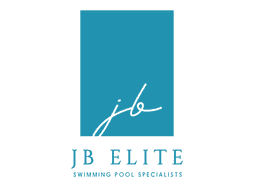Maintaining your pool between cleanings can help keep it clean and safe for swimmers of all ages. Here is some advice on how to look after and maintain your swimming pool in between professional cleans.
Keep the pH Level Balanced
With the use of test strips or a digital testing tool, it’s crucial to maintain the pH level of the water in balance. Because it affects the water’s capacity to sanitise, fight algae growth, and prevent corrosion, maintaining a stable pH level is crucial. The optimal range to aim for is 7.2–7.6, so make sure to check frequently and make any required chemical adjustments.
Not to worry if your pH falls slightly out of this range when testing, just use the required chemical (pH increaser or reducer) to get this level back on track! It is always good practise to check your alkalinity level (TA) too as this can have a knock on effect to your pH, which could cause you to receive some incorrect or inaccurate readings.
Scoop Out Debris Regularly
Make sure to skim the surface of the water daily with a net and remove any debris that is visibly floating in it to help reduce debris build-up in your swimming pool. Regularly carrying out this maintenance is also helpful to prevent stains or discolouration on the sides or bottom of your pool.
If you have a safety cover, you may find that this is not required as regularly as most pools without a cover at all! At a minimum, we would recommend netting the pool at least once a week just to ensure that no debris has chance to affect your chemical levels.
Vacuum Regularly
Regular vacuuming can help remove dirt particles that have accumulated on the pool’s bottom but are too small to be seen with the naked eye, in addition to scooping away debris. In order to guarantee that all debris has been removed from difficult-to-reach regions like corners or cracks in floor tiles, etc. vacuuming should be done at least once a week (more frequently if possible). Otherwise, these areas could develop breeding grounds for bacteria later on down the line.
It is possible to purchase a robotic vacuum cleaner that can automatically clean the walls, floor and even waterline of your pool. These are great at catching debris like leaves, small twigs and other smaller debris; however, if you find your pool has algae in it, you must manually vacuum your swimming pool to waste as the filter and automatic cleaners are not able to catch particles as small as the algae.
We hope that this will help shed some light on how to maintain your swimming pool in between cleans..
You can help guarantee that your swimming pool is safe and clean in between professional cleanings by following these easy measures, saving both time and money.

